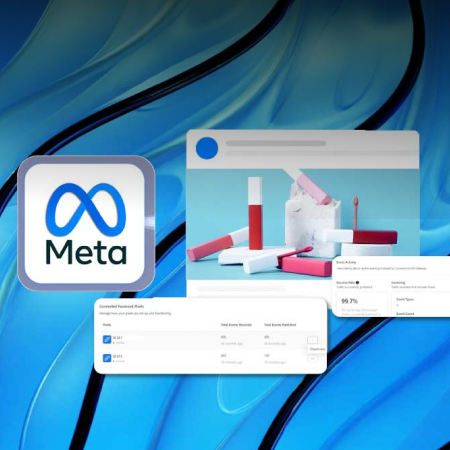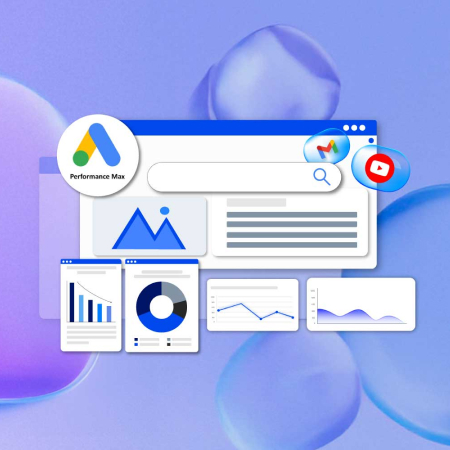For nearly two decades, search marketing has revolved around ten blue links, Shopping carousels, and ad slots alongside them. But in 2024–2025, Google introduced something more disruptive: AI Overviews and AI Mode, where large language models generate summaries directly in the SERP. Ads are now eligible to appear within these AI responses, not just around them.
This shift raises new questions for marketers: How do you get discovered when AI does the answering? How do you design campaigns for AI Mode? And what’s the right way to measure success when “zero-click” becomes the default?
What Are AI Overviews & AI Mode?
- AI Overviews (AIO): Short, model-generated summaries that appear on top of the SERP for informational queries. They synthesize multiple sources and may cite web content. Ads are now running inside these overviews.
- AI Mode: An experimental toggle where the entire search experience is AI-driven, including summaries, conversational refinement, and embedded ads. Google confirmed in 2025 that ads are eligible to appear natively in this mode.
Why it matters: The surface area for ads hasn’t shrunk; it’s shifted. The entry points are now structured data, content clarity, and creative that play well with LLM-driven retrieval.
How Ads Work in AI Experiences
Google has not published a full spec, but early rollout data suggests:
- Eligibility is contextual: Ads in AIO/AI Mode seem to rely heavily on search themes, product feeds, and entity alignment.
- Creative leans semantic: Rich assets (structured data, feed attributes, product titles) increase the chance of being pulled into AI responses.
- Measurement is fuzzy: Impression and click logging in AIO is not yet broken out cleanly in GA4 or Google Ads UI, requiring triangulation with branded search lift, view-through, and modeled conversions.
In other words, you can’t “target AI Mode,” you can only make your inputs more AI-readable.
How Ads Work in AI Experiences
For organic, AI Overviews are a double-edged sword:
- Pro: Your content may be quoted, boosting visibility.
- Con: Users may get their answer directly, without clicking.
Tactics that help:
- Entity-first content: Write pages that clearly define entities, relationships, and answers. Use JSON-LD schema to structure them.
- Citations bait: Concise answers, tables, and FAQs are more likely to be cited in AI summaries.
- Brand visibility metrics: Shift KPIs from raw organic clicks → to branded query lift, mentions in AIO snippets, and referral traffic from AI summaries.
What This Means for Paid Search
For paid, AI Mode redefines where campaigns show up:
- Search themes in Performance Max become crucial because they feed the AI Mode with relevance cues.
- Product feeds are now part of semantic retrieval so that Google may pull assets dynamically into AI responses.
- Creative governance matters: AI Mode prioritizes high-quality, structured, policy-compliant creative.
Practical steps:
- Seed robust Search themes in PMax to influence eligibility.
- Optimize feeds with clean product titles, attributes, and entity-rich descriptions.
- Run incrementality tests to measure lift in branded search volume after exposure in AI Mode.
Measurement in a Zero-Click World
Traditional CTR-based reporting breaks down when users never leave the SERP. Instead:
- Track assisted conversions with GA4 to measure paths where AI surfaces drive mid-funnel discovery.
- Measure brand search lift by comparing baseline branded queries pre- or post-AI Mode adoption.
- Deploy MMM (e.g., Meridian) and incrementality tests to triangulate hidden impact.
Playbook for 2025
- Content for AI Overviews (SEO)
- Structured schema, FAQs, tables.
- Crisp definitions and authoritative tone.
- Campaigns for AI Mode (Paid Search)
- Strengthen Search themes in PMax.
- Feed-level hygiene and entity clarity.
- Creative QA: compliance and clarity.
- Measurement Redesign
- Branded query lift as a core KPI.
- Assisted conversion paths in GA4.
- Incrementality testing for spend justification.
Competing in the Age of AI Search
AI Mode and AI Overviews are not a side experiment; they’re a structural change to search itself. The winners will be those who stop chasing position in the SERP and start designing for retrievability, semantic clarity, and zero-click influence.
The ad slot hasn’t disappeared. It’s just moved into the LLM’s answer box.


